Adding to Perfection
feature By: Mike Nesbitt | April, 24
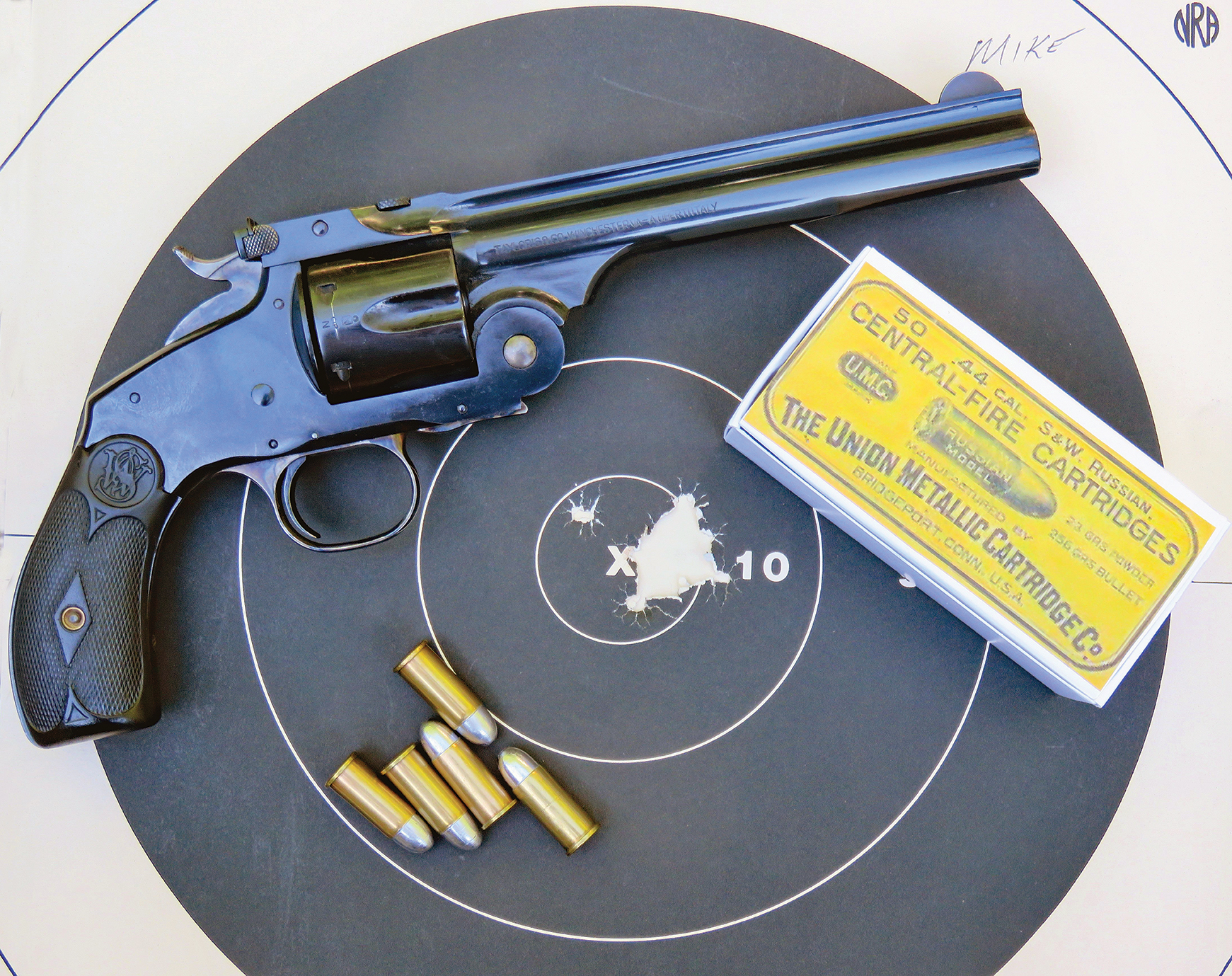
Some brief background is in order because there were some real stepping-stones in evolution to the old Smith & Wesson No. 3 revolvers. The No. 3 designation actually refers only to the frame size and the first S&W No. 3 was the 44 American. The old .44 was rather well accepted by almost everyone except the Russians. The Russians were looking for a new military revolver and what they didn’t like was the outside-lubricated bullet used with the 44 American cartridge. So, they designed a new cartridge, which became the 44 Russian, the second stepping-stone in the line-up of the large single action top-breaks.
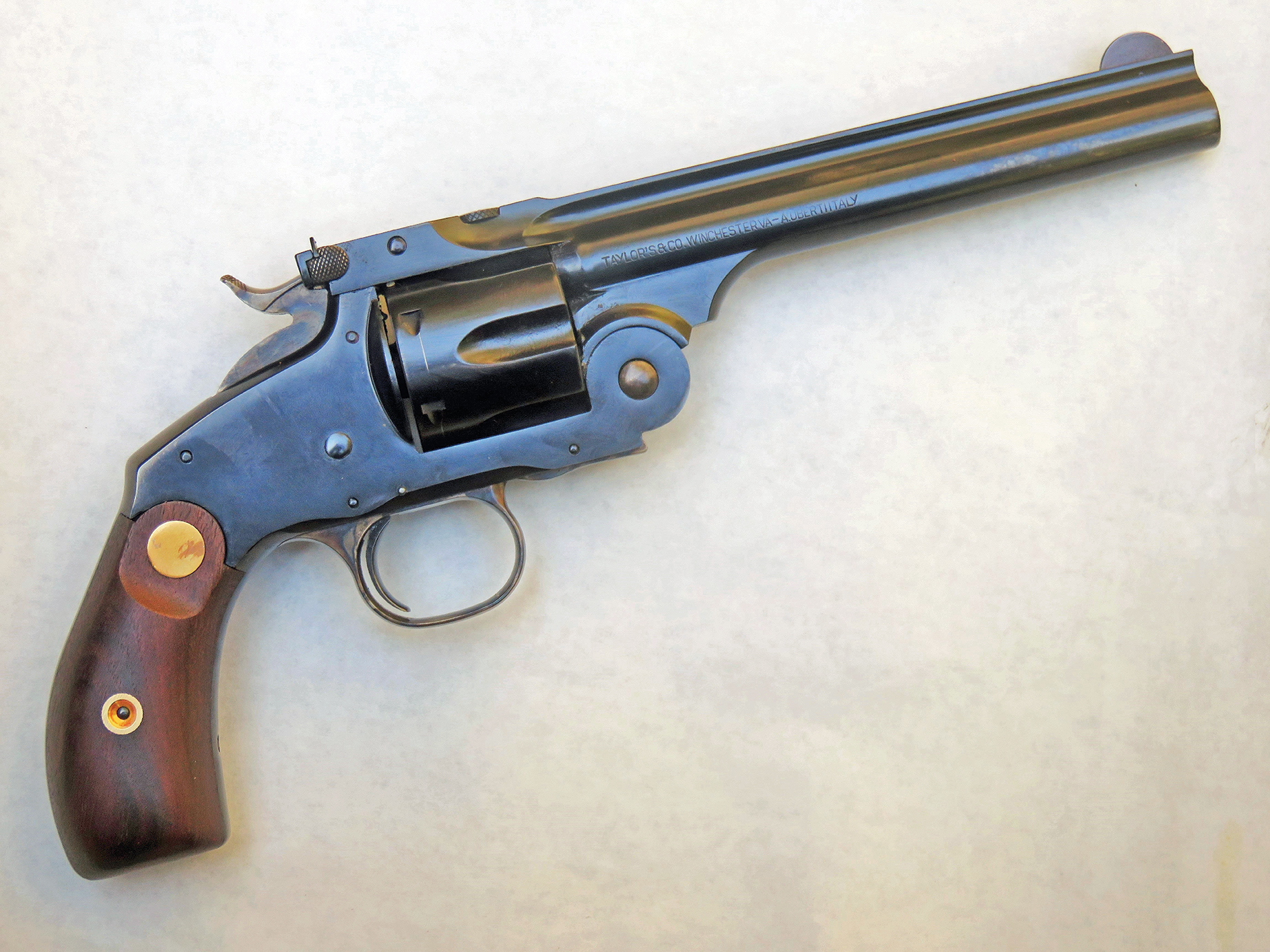
However, the evolution didn’t completely stop there. In 1885, Smith & Wesson modified their New Model No. 3 by lengthening the frame and top strap (as well as the cylinder) by 1⁄8-inch to accommodate the longer 44/40 cartridge. Colt called their Single Action Army the “Colt Frontier Six Shooter” when it was chambered for the 44/40, so Smith & Wesson did nearly the same, referring to it as the “New Model No. 3 Frontier.” For reasons that we can’t determine today, the 44/40s in the New Model No. 3 were not popular (while the double action version in 44/40 was) and most of the 44/40 single actions were returned to the factory to be rebuilt into other calibers.
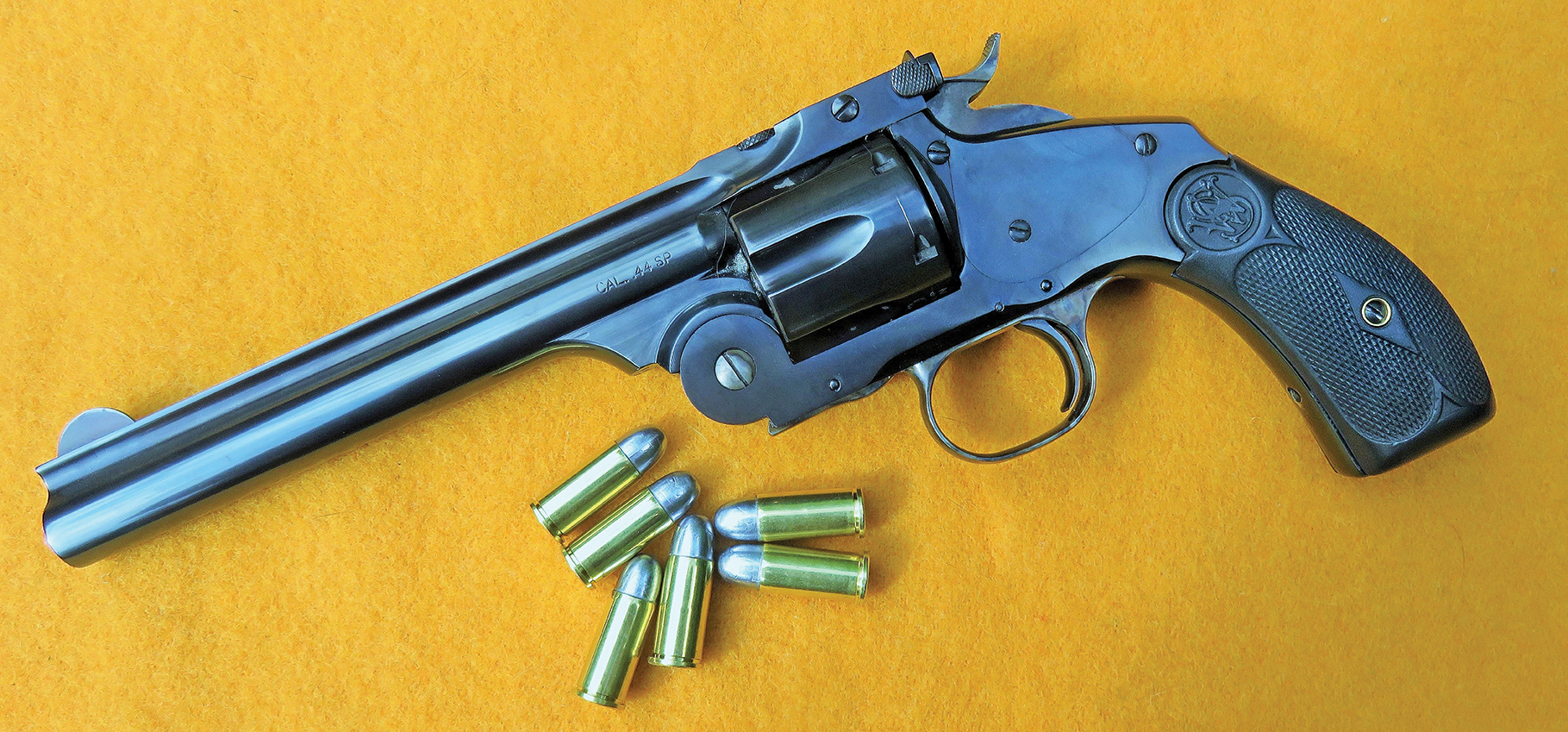
The Uberti-made copies of the New Model No. 3 follow the old originals closely. One feature they have, which was borrowed from one of the earlier Russian Model revolvers, is the top of the frame screw that holds the cylinder retainer. We can’t have any complaints about the Russian-style retainer.
The original long-framed New Model No. 3, continued in production until this revolver was dropped by Smith & Wesson in 1908, with some special versions being made or assembled up until 1910. Target calibers such as the unusual 32-44 and the 38-44 cartridges were used in the long frames (although Smith & Wesson listed them as a separate model) and in 1907, another try at adding a rifle cartridge to the line-up was made by introducing the gun in 38/40 caliber. That didn’t fly any better than the 44/40 guns and less than 100 of the 38/40s were made. In 1903, the 38 Special was born and a few of the New Model No. 3 were made in this caliber. Yes, that makes the 38 Special an authentic caliber for the New Model No. 3, but modern copies in 38 Special are no longer made. And, finally, in 1906, the 44 Special was introduced and a very few of the New Model No. 3 were made for the new .44 cartridge. This makes the Uberti copy in 44 Special very authentic. Both the 38 Special and the 44 Special required the long frames on these top-breaks because of the overall length of those cartridges.
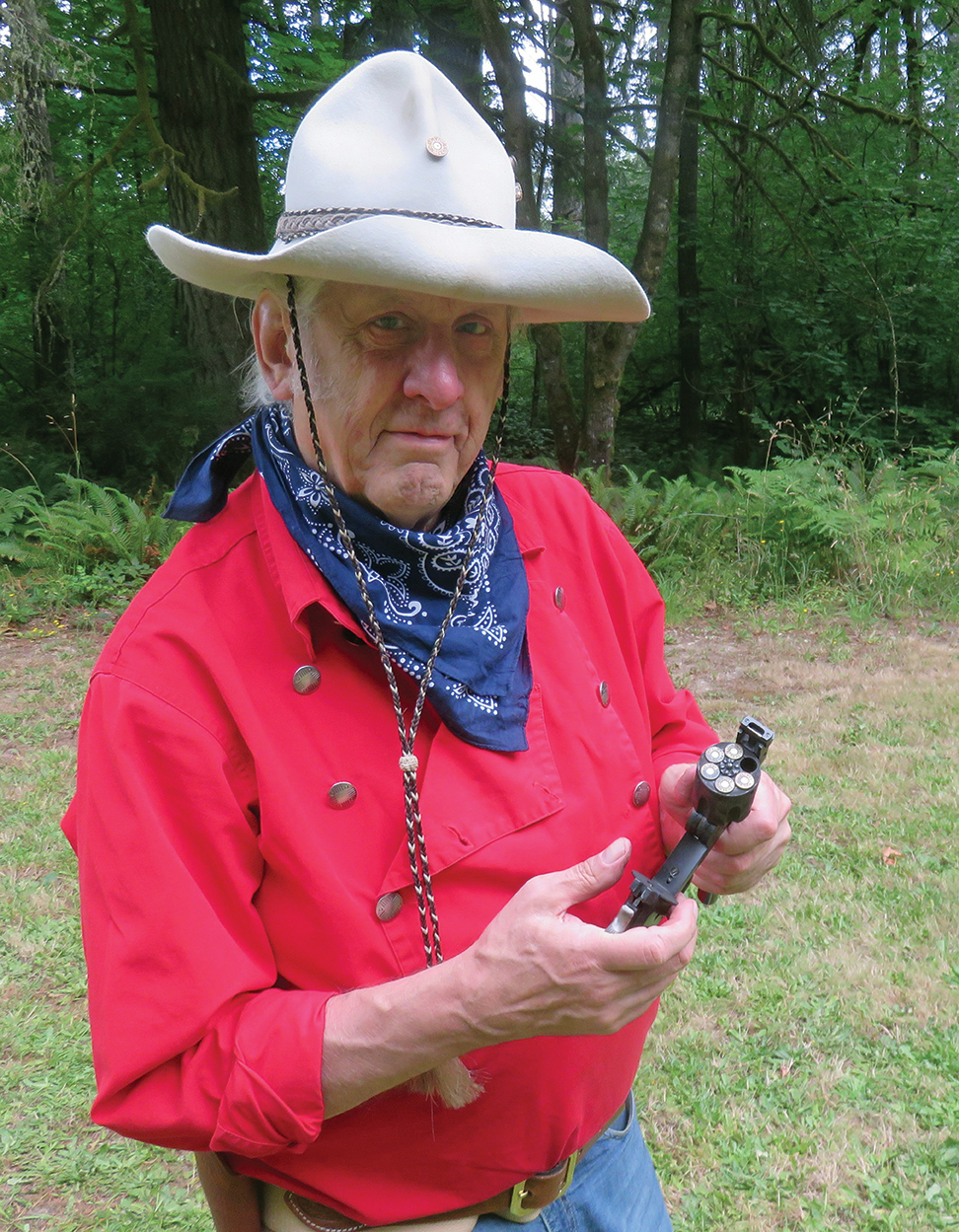
The 44 Special, by the way, was our last cartridge designed to be loaded with black powder, so using it with black powder and mentioning it in this magazine is very appropriate. My favorite load is to use 18 grains of Olde Eynsford 2Fg in Starline’s 44 Russian cases under bullets from an old Lyman mould No. 429184, the original bullet style for the 44 Russian. Those perform very well and that load quickly became my standard one for this pleasing revolver.
This gun from Uberti is supplied with smooth wooden grips, but Smith & Wesson usually sold them with either checkered hard rubber grips or checkered walnut grips. With the idea of greater authenticity in mind, I looked for some copies of the original hard rubber grips, which for me would add to the perfection of this revolver. Those grips were found at Triple K Manufacturing Company, 2222 Commercial Street, San Diego, California 92113. Phone: 619-232-2066 or email: sales@triplek.com. They offer a very wide assortment and the best way to look at their offerings is to visit their web site at vintagegungrips.com.
Triple K has several color options and their black grips are priced at $37.50. Selecting an optional color raises the price by $17.50. There is also an additional cost for the screw and escutcheon kit, which includes three screws of different lengths plus the two brass escutcheons for holding the grips to the gun. That screw kit is priced at $16. These grips are made for the original S&W guns; they are not specifically made for the reproductions or copies of those guns which are being made today. And, in their line-up of S&W grips, they also have grips for the old top-break .44 double action models which had a slightly smaller grip when compared to the single actions. If you plan to place an order for grips to go on the New Model No. 3, be sure to look for “SA” instead of “DA” in the description. The grips I bought were Triple K’s part number 3917G.
There is some slight fitting that needs to be done. Also, the indexing holes at the bottom of the grips on the inside do not line up with the indexing pins in the revolver’s grip frame. Those simply need to be re-drilled before the grips can be attached. After the new holes were drilled, attaching the grips was completed with the installation of the escutcheons and the longest grip screw in the kit. Then it was time to admire the “new gun” look that the new grips made possible. Now my .44 revolver looks more like the real thing and to me that really adds to the perfection.
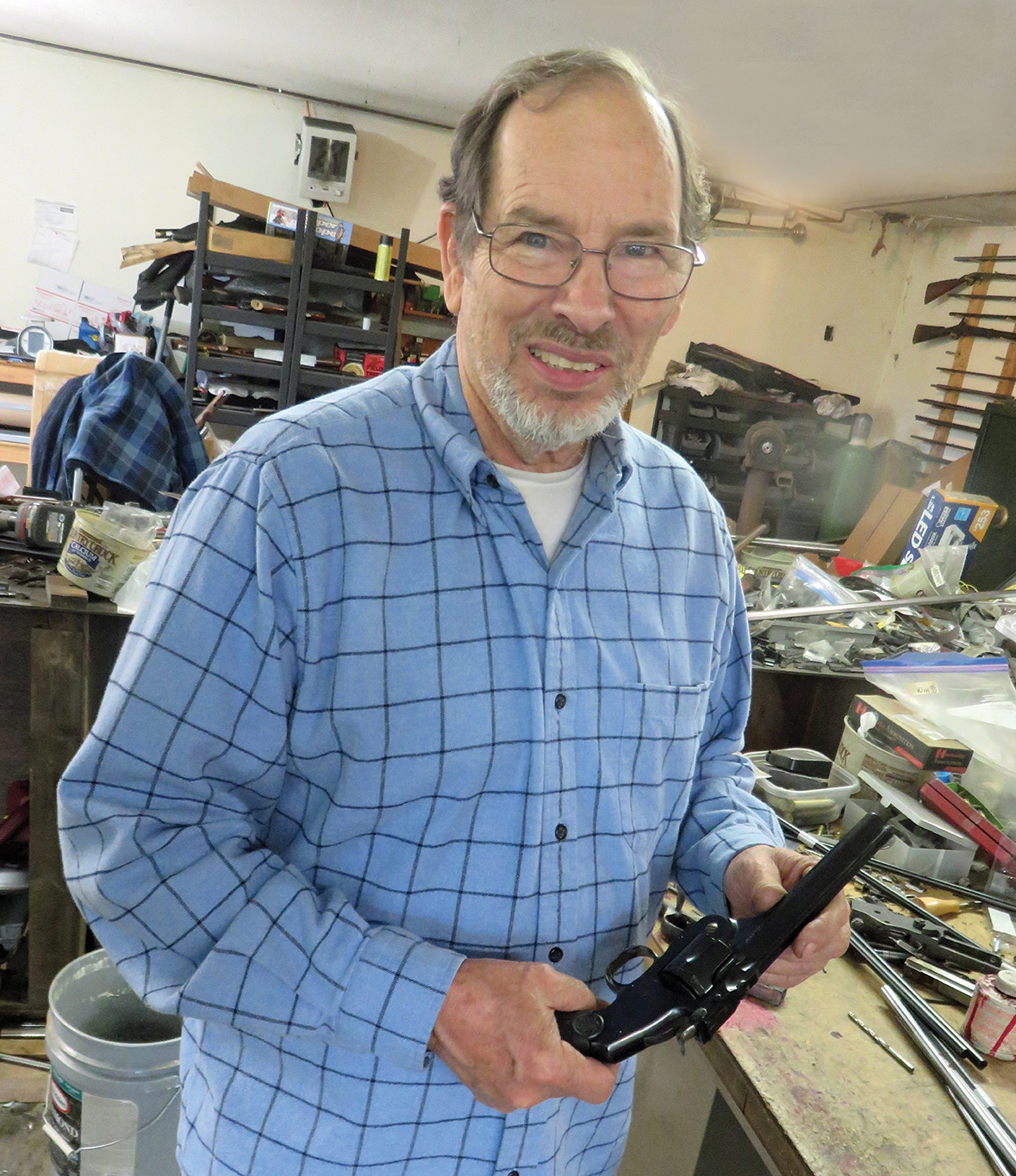
John knew just what to do. After he performed his magic and had the gun back together again, the trigger now has a very crisp 2½-pound pull with no creep at all. Having such a good trigger pull on this .44 revolver is simply a true pleasure.
I will certainly recommend John Taylor for his excellent gunsmithing. John can also make parts that might not be available elsewhere. For his contact information: Taylor Machine, 14119 Military Road E, Puyallup, Washington 98374. Phone: 253-445-4073 or Email: info@johntaylormachine.com.
Paper targets always show how well (or how poorly) a gun might be shooting, but firing at paper targets simply isn’t as much fun as shooting silhouettes or reactive targets. So, with the 44 Special holstered and on the web Tommymaker cartridge belt, I went to the trail where the pistol match is held during our Buffalo Camp events. There this gun began to really shine and I hit most of the two-hand and the one-hand targets while shooting black powder loads.
One target that is not included in the Buffalo Camp black powder revolver match is a 24-inch diameter circle, called the “Full Moon.” That target is intended for muzzleloading rifles and it is about 100 yards away. With this revolver, I held at 12 o’clock on the “Moon” and fired. The rather slow-moving bullet from the 44 Russian load, took its own sweet time getting there (about 700 fps) but the hit was declared by both the target swinging back and forth and the delightful sounding “clang.” To be sure that wasn’t a freak hit, I fired again; it hit once more. However, some shooting at paper targets still needed to be done. Those targets didn’t let me down because grouping was very good. Perhaps those groups were improving as I learned more about this six-gun with its new trigger pull.
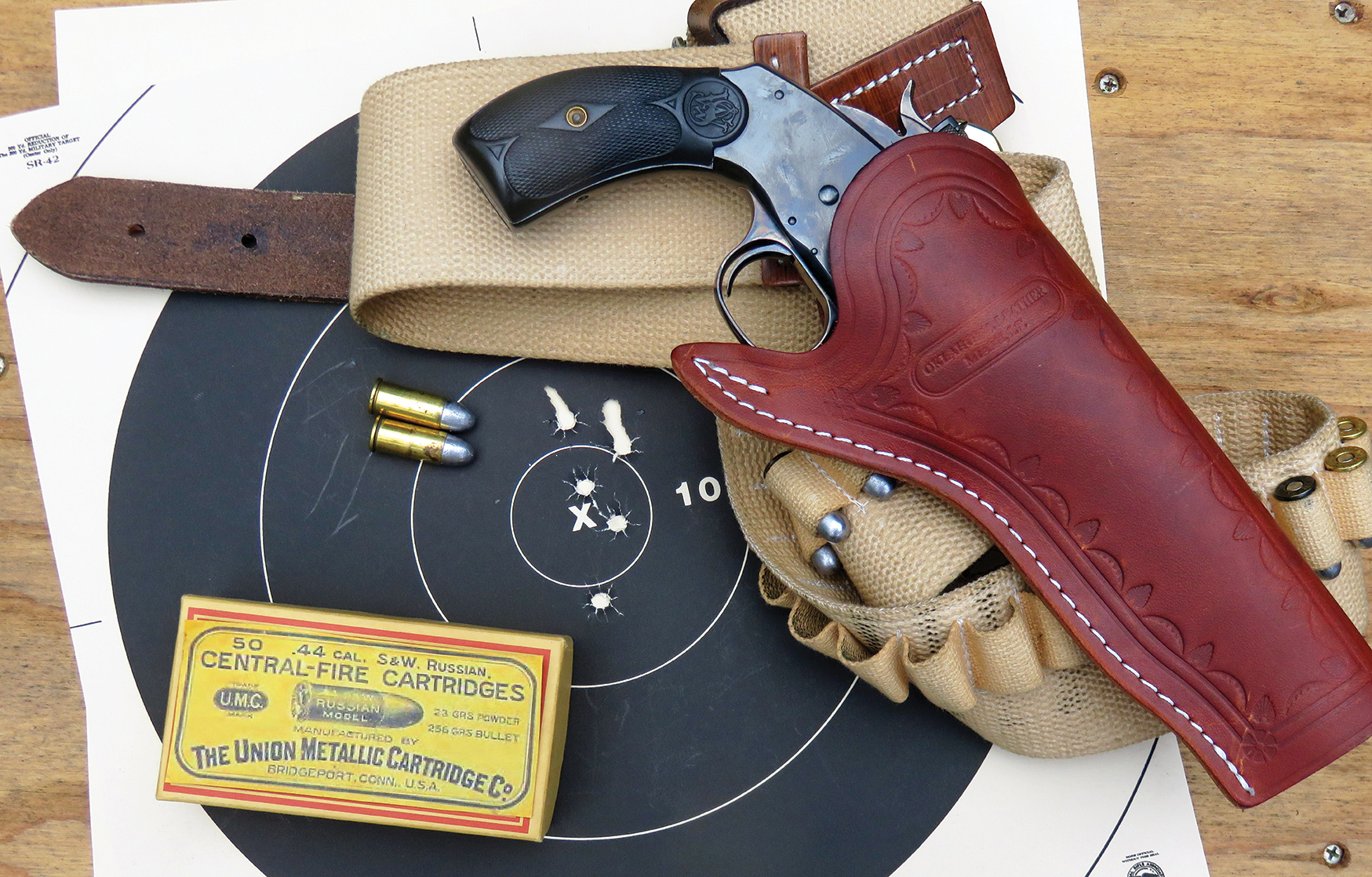
At only 30 feet, the .44 caliber bullet holes are easy to see, especially when they are in the X-ring. While I was shooting my 10 shots for score, that hole in the X-ring just kept getting bigger, shot by shot. When my 10th shot went through that hole, I finished my target with a score of 100-10X, which was the winner of the match. One of my shots might not have cut the line to the X-ring, very slightly to the right, but the scorers gave me the benefit of any doubt because that line is no longer there. That “put the cap on” perfection.
This story cannot be concluded without telling you how getting one of these new 44 Special revolvers proved to be almost difficult. I contacted a couple of dealers only to be told that the gun I wanted wasn’t available in 44 Special. When I gave them the part number to order, they were not interested in helping me. So, I asked the good folks at C. Sharps Arms Company, if they could order the gun for me. To do that, they became dealers for Taylor’s and Co. Once that was done, my 44 Special was delivered very quickly. So, if you want more information about this gun, go to taylorsfirearms.com. Look in their “Top Break Revolvers” section and Taylor’s suggested retail price for the 44 Special is $1,170. My best recommendation to purchase one is to order it through C. Sharps Arms and they’d be able to forward it to your favorite FFL. Their contact information is: C. Sharps Arms at info@csharpsarms.com or call them at 406-932-4353.


